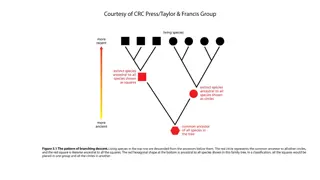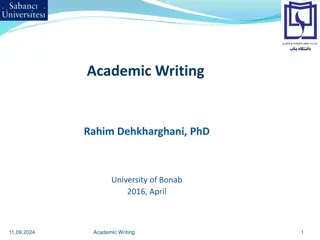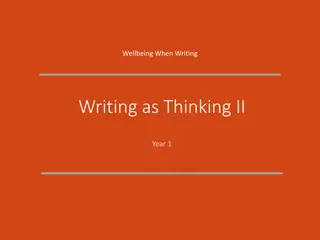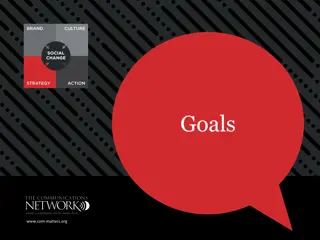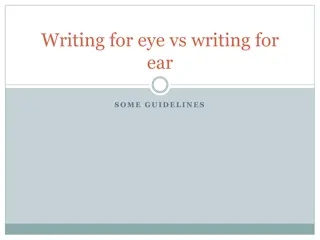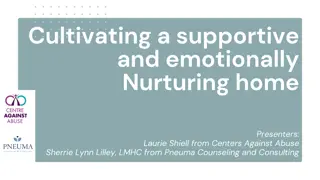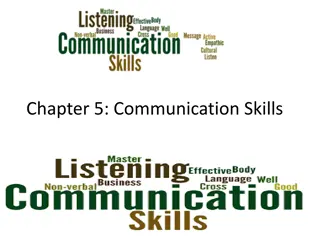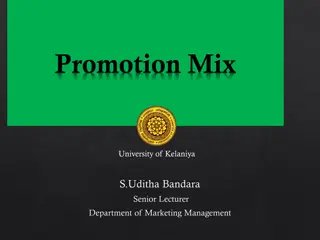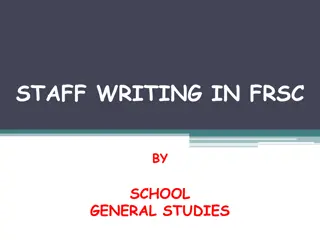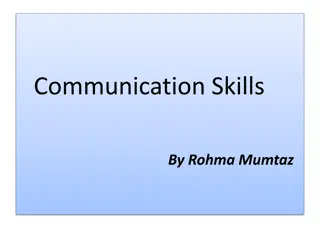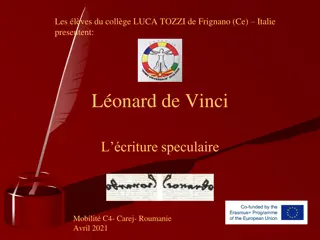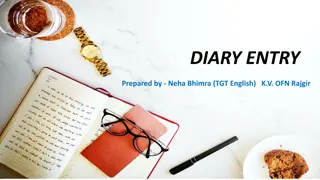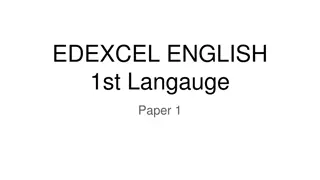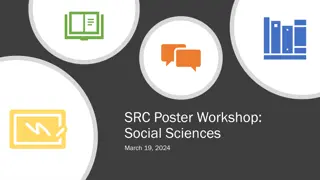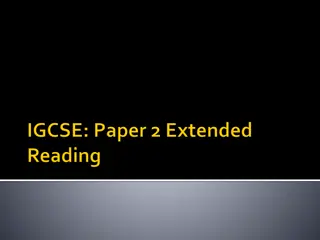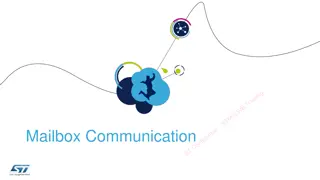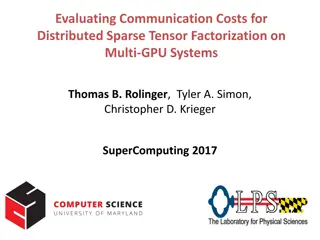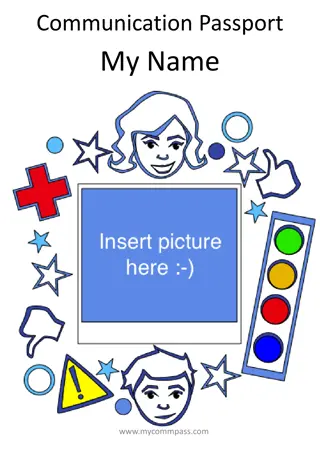Writing Tips for Effective Communication
Learn the rules of structuring paragraphs and texts, including focusing on one main point per paragraph, using connecting words for coherence, and following a writing process. Enhance your writing by organizing ideas, varying sentence and paragraph lengths, and engaging readers with a clear structure from introduction to conclusion.
Download Presentation

Please find below an Image/Link to download the presentation.
The content on the website is provided AS IS for your information and personal use only. It may not be sold, licensed, or shared on other websites without obtaining consent from the author. Download presentation by click this link. If you encounter any issues during the download, it is possible that the publisher has removed the file from their server.
E N D
Presentation Transcript
English Language Assistant Prof. Dr. Ahmed A. Mohammed Ph.D. Immunoparasitology University of Salford International-Manchester, UK
Writing & Writing Tips
The Paragraph As to paragraphs, keep the following rules in mind: Concentrate on one main point (idea) per paragraph. Summarize this point in the first sentence (topic sentence) All sentences that follow support the main point or limit its scope (supporting sentences) The last sentence is a summary of the main point of the paragraph and is used as a transition to the next paragraph. (concluding sentence)
The Text The typical structure of a text is as follows: Title Introduction Main part Conclusion Make your texts interesting. Vary the lengths of your sentences. Use a short sentence to put emphasis on an important statement. Vary the lengths of your paragraphs and avoid one-sentence paragraphs. There are various possibilities on how to structure your texts, e.g.:
General to Specific: general statement followed by details and examples Specific to General: details and examples followed by a generalization: Known to Unknown: provide new information based on what readers already know Least Important to Most Important: catch and keep readers attention Chronology (ordering by time): e.g. in biographies
Process of writing Successful writers follow these steps in their writing: Collecting the data Organizing the data Making an outline. The first draft. Editing. Possible reassessment of the ideas (crossing out some ideas, introducing new ideas, rearranging ideas ) Final draft.
Useful connecting words: 1. Expressing addition To add information, you can use these expressions: Examples: in addition, - as well as - moreover - not only...but also... - furthermore - besides - also - too - and... Examples: If the project fails this will have terrible consequences not only on our department, but also on the whole organization John s grades are terrible because he has been so lazy these days. In addition, his relationship to his parents got worse. The report is badly written. Moreover, it is inaccurate.
2. Expressing contrast To express contrast, you can use these expressions: Examples: although - even though - in spite of / despite - however - yet - nevertheless - nonetheless - on the contrary - whereas - on the one hand ...but on the other hand... - conversely - but... Brain drain has terrible consequences on the developing countries. Nevertheless, nothing has been done to solve the problem or at least reduce its negative effects. In spite of / despiteFred s old age, he goes jogging every morning. Althoughshe s very nice, her classmates hate her.
They have got two children, a boy and girl. The boy takes after his father whereas the girl takes after the mother. 3. Expressing cause and effect To express cause and effect, you can use these expressions: Examples: consequently - as a consequence - as a result - therefore - because of this - for this reason - because - since - as - for - due to - owing to She remained silent, because she was so depressed to talk. We can t go to Sue s party as we ll be busy working on our project.
The plane was delayed because of the foggy weather. He had spent most of his time hanging around instead of revising his lessons. Consequently, he had a lot of trouble answering the exam questions. 4. Expressing purpose To express purpose use the following words: Examples: in order to - in order not to - so as to - so as not to - to - not to She wakes up early in order to be on time to work. They visited him so asto offer their condolences for the death of his wife
He helped the new policewoman so as not to fail in her first mission. 5. Summarizing To summarize, you can use the following expressions: in conclusion - to conclude - to sum up briefly - all in all
Useful Academic Expressions 1. Stating your own position on a Subject or Topic This paper aims at... This paper will be concerned with... The aim of this work is to The view presented in this paper/essay/review is that.. 2. Presenting your own point of view I strongly believe that... To my mind... As I see it.... There are many reasons why It is important/necessary to point out that The first thing to be considered is
3. Supporting your view and adding more information The first/second reason why is Firstly/Secondly... not only ...but also... The most important In addition, Furthermore, Another reason is A further point is
4. Stating the view of Another Person on a Subject or Topic Chomsky (1965) argues/claims/points out that... The authors views can be stated as follows... The opinion of Chomsky (1965) is that Chomsky (1965) has suggested that . According to Smith (1992),
5. Agreeing with the Views of Others As Chomsky (1965) says/states Like Chomsky (1965), it can be agreed that . because 6. Indicating a Lack of Knowledge in a Particular Topic or Subject Despite the book s attempts to... it lacks accuracy... Although the research has tended to focus on ..., less attention has been paid to Most studies, such as Harris (1970) and Chomsky (1965) have emphasized/concentrated on/focused on inadequate /insufficient .
7. Drawing a Conclusion Using the Work of Others To sum up, ... As a conclusion, ... As a summary, ... All in all, ... To conclude, ... Based on these authors, a connection can be made between It can be concluded from what Jones (2004) and Smith (2002) have stated that...
How to define concepts . can be defined as .. . can be described as . refers to .. . means













